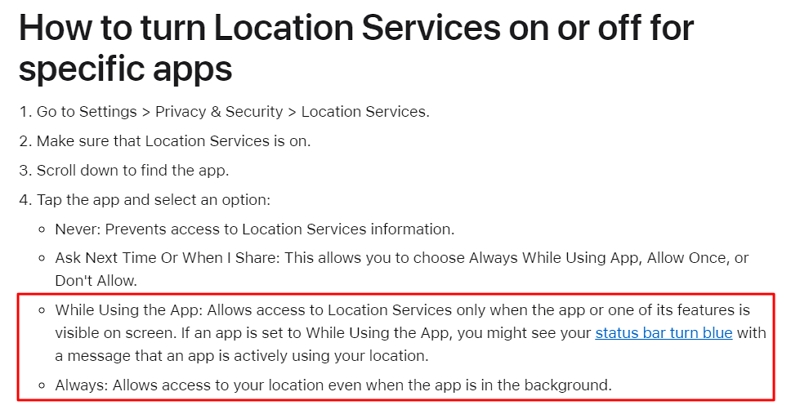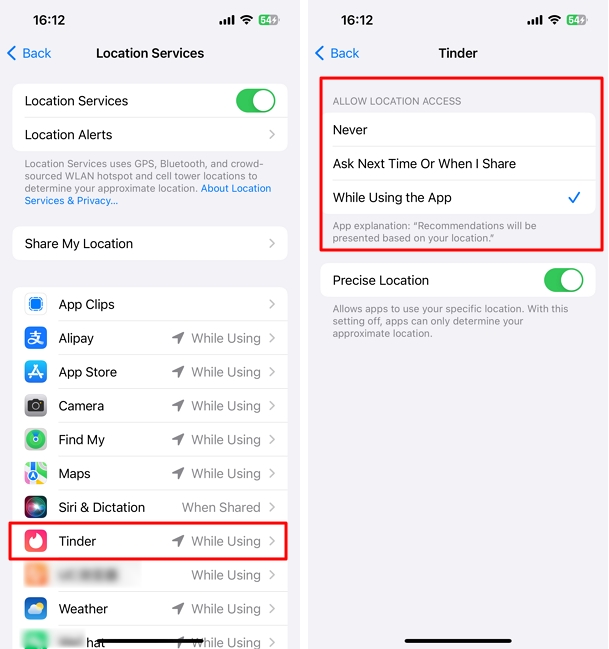Hot Topics
Navigating dating apps like Tinder often involves understanding how they handle location data. One common question that arises is whether Tinder automatically updates your location.
This query is crucial for users who want to ensure their matches see their current whereabouts accurately. Let's delve into this topic to learn whether Tinder automatically updates your location and how it handles location updates.

The answer is YES when you grant the app access to your device's location, open the app (so it's visible on the screen), and actively change your location within the app.
However, the answer is NO even if Tinder is running in the background. Despite many articles mention that Tinder automatically updates your location even when in the background, our test confirms the opposite conclusion. When our location changes with Tinder running in the background but not visible on the screen, the location is not automatically updated.
Additionally, Apple's explanations about location access settings shed light on this matter. 'While Using the App' mode allows access to Location Services only when the app or one of its features is visible on the screen. On the other hand, 'Always' mode permits access to your location even when the app is running in the background.

To use Tinder, you'll need to grant access to your device's location by going to Settings > Tinder > Location > Enable Only While Using the App. Since there's no 'Always' option available, and Tinder doesn't request permission to use your location when it's in the background, the app will not automatically update your location even when running in the background.

Tinder determines users' locations using their phone's GPS, Wi-Fi, or mobile data. This information is integrated with its algorithm to display potential matches within specified areas, based on users' distance preferences.
Users have some control over this feature by adjusting settings to determine the extent of location information shared with the app, influencing the precision of suggested matches.
Tinder updates your location only when you open the app and your location changes with location permissions enabled. The app tracks your online status while actively using it but doesn't continuously monitor your location when not in use.
If your location remains the same despite frequent app visits, Tinder won't update your location as often. However, changing your location frequently and opening the app each time will prompt Tinder to update your location more frequently for other users.
Displayed locations on Tinder are based on your last known location when you last used the app. If you travel to a new city or country, matches will still be based on your previous location until you open the app and update your location.
No, Tinder does not continue updating your location if the app is running in the background. Location access is limited to instances when the user actively engages with the platform.
Under normal circumstances, Tinder doesn't track your location when you're logged out. It only receives location updates at intervals, and minor changes may be ignored.
While Tinder's user interface shows approximate distances, the app uses exact coordinates to calculate distances between users. Tinder employs security measures to protect user location data from potential breaches.
Distances shown in kilometers are not accurate as Tinder primarily uses miles for distance measurements. The app may snap locations to a coarse-grained grid, resulting in some inaccuracies, especially for fast-moving individuals.
If you're curious whether someone you're dating is still active on Tinder, there's a simple method to find out: check their current location.
Tinder updates a user's location and checks for nearby matches only when they open the app. So, if you notice that a match's distance has changed, it suggests that they may have opened the app in a different location recently.
The paid feature from Tinder: Tinder Passport allows you to change your location as often as you want within the app. You can only swipe in one city at a time, but it allows you to save up to 4 default locations.
There is another way that you can change the location on Tinder. Just read this tutorial to find more details.
The simple answer to "Does fake GPS still work with Tinder" is "Yes." If you would like to meet people outside the scope of your location, you can use GPS spoofing apps such as MockGo to fake the location for iPhone without jailbreak and match with people outside the 100-mile radius limit that Tinder works with.
Most Android devices come with an "Enable Mock Location" feature that makes it very easy to fake GPS on Tinder.
When choosing the best solution to fake Tinder location, it is vital to choose a solution that will not affect the safety or security of the device or any data on it.
Navigating dating apps like Tinder can sometimes feel overwhelming, especially with all the features and permissions to manage. However, it's important to note that Tinder doesn't automatically update your location unless you actively open the app or make significant changes to your whereabouts.
So, whether you're exploring a new city or enjoying a vacation, remember to open Tinder periodically to ensure your location is up to date!

Mako is a technical writer with a passion for all things tech. Whether you're wondering about how to fix your iPhone or Android device or trying to get something to work in your settings, Mako is your go-to for professional help. He loves writing, testing solutions, and most of all, making sure his research is factually accurate.